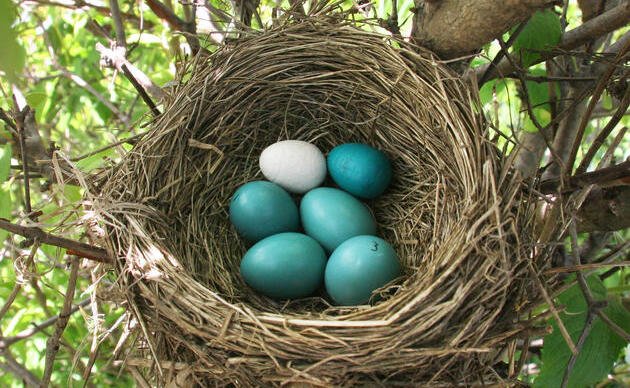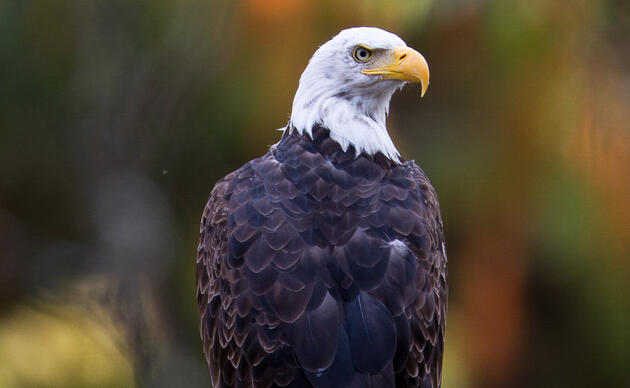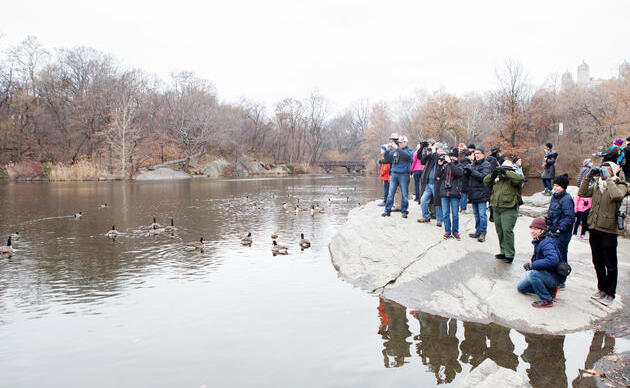In "The End of Night," Paul Bogard discusses the quest to find true darkness and learn about the hazards associated with our increasing use of artificial light, including the dangers to birds and ourselves. Audubon Minnesota has been working to reduce light pollution through our Lights Out program since 2007.
A Conversation with author Paul Bogard
How did you get interested in light pollution? I've always loved nighttime and was lucky to have firsthand experience with natural night as a child. We have a cabin in northern MN where the Milky Way spread from one horizon to another and the full moon was beautifully bright. When I began to learn the constellations, I found that I couldn't see many of them because of light pollution. That realization led me to research and write The End of Night.
How does light pollution affect birds? Most songbirds migrate at night. There are instances of large numbers of birds being drawn toward very bright lights and either crashing into buildings or circling until they die of exhaustion. Many of the birds that hit windows during the day were actually drawn into the city by the lights the night before. Once there it can be hard for them to find their way out.
Is the problem getting better or worse? Everywhere is getting brighter, and nowhere is getting darker so it's fair to say that the challenge facing migrating birds is getting worse.
What difference does a program like Audubon’s “Lights Out” make? It can make a big difference. That's one thing about light pollution--it is readily within our ability to control. By definition light pollution is the overuse and misuse of artificial light at night. We could help birds tremendously simply by making sure our lights are aimed down where we need the light, rather than up into the sky where it does no one any good, or horizontally into our eyes where it causes glare. Once people realize how much light we waste (at least 30%) they usually understand how stupid it is. We can have thoughtful, intelligent lighting at night and help birds, other wildlife and people too.
Is light pollution only a “big city” problem? No, it's everyone's problem. Virtually every city or town of any size has the same recipe for light pollution - inefficient fixtures that send light where we don't need it (into the sky, into our neighbor's homes). The only difference is that big cities have more lights. But lights in the countryside have the potential to have greater ecological damage because there is more wildlife nearby. Also, artificial light affects humans wherever they live. Our bodies have not evolved to be exposed to artificial light at night, and that's true whether you live in a city or a small town.
Does “lights out” at home make a difference for birds? Absolutely. Every light contributes to the problem, and every "lights out" decision contributes to the solution. We also need to think about insects. More than 60% of invertebrate species need darkness to live and breed. Without it, they suffer and so, in turn do many birds (and bats) that rely on these species for food. So even a "yard light" or "security light" that attracts insects can be impacting the health of bird populations.
What actions can people take to help reduce light pollution? First of all, become informed. There are so many reasons that our overuse and misuse of light is dangerous and costly. Once you learn these reasons, the way we use light seems ridiculous. Second, take control of your own lights at home by installing shielded fixtures, turning unnecessary lights off at night, or using motion sensors. Third, become active in your community by helping to create or enforce a lighting ordinance that creates the kind and level of lighting you want in your community. We're going to have light at night – we love it, we want it – so the question is, what kind of lighting? Will it be wasteful, irresponsible, un-neighborly light? Or will it be thoughtful and intelligent, even beautiful light?
Are LEDs going to help or hurt? LEDs will soon be everywhere, so this is a vitally important question. LEDs hold both promise and peril. Promise because they are so much more efficient than electric lights and can be controlled far more easily--we can raise and lower their level of light through the night, for example. But peril because 1) they could simply mean more light everywhere, and 2) the type of LEDs most communities are installing are heavy in "blue-rich white light," which is the worst kind of light for us (and other forms of life) to be exposed to at night. If we must use light at night, it's best to use lights made from the warmer end of the spectrum, the reds and oranges, rather than blue light. I fear that because we are not changing our thinking about lighting – essentially that more light is better – that the coming of LEDs will only make the problem of light pollution worse.
Watch Paul's promotional video here
Audubon Minnesota’s Lights Out program has been ongoing since 2007. Many of Minnesota’s most iconic buildings participate in our program during spring and fall migration every year.



